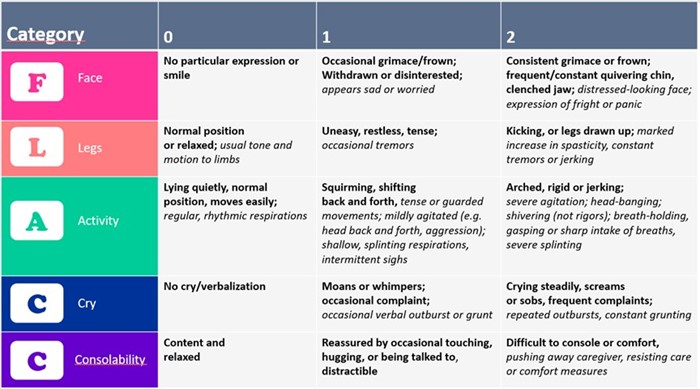A nurse is caring for an older adult client who is postoperative following a total hip arthroplasty. The nurse is preparing to change the client's surgical dressing. Which of the following actions should the nurse take to demonstrate sensitivity to age-related changes?
Ask the client to help with the dressing change
Wait for the client to approach the nurse for assistance
Use paper tape for securing the new dressing
Apply the dressing loosely over the incision
The Correct Answer is D
d. Apply the dressing loosely over the incision.
Explanation:
The correct answer is d. Apply the dressing loosely over the incision.
When caring for an older adult client, it is important for the nurse to be sensitive to age-related changes and promote their comfort and well-being. Applying the dressing loosely over the incision allows for beter circulation and ventilation, which can help prevent complications such as skin breakdown and infection.
Option a is not the correct answer. Asking the client to help with the dressing change may not be appropriate, as postoperative clients, especially older adults, may have limited mobility or dexterity. It is the nurse's responsibility to provide the necessary care and support during the dressing change.
Option b is not the correct answer. Waiting for the client to approach the nurse for assistance may lead to delays in care and could potentially compromise the client's healing process. The nurse should proactively assess the client's needs and provide appropriate care.
Option c is not the correct answer. Using paper tape for securing the new dressing does not specifically address sensitivity to age-related changes. While paper tape may be gentle on the skin, it is not the primary consideration in this situation.
By applying the dressing loosely over the incision, the nurse demonstrates sensitivity to age-related changes and promotes the client's comfort and optimal healing. This approach takes into account the potential for decreased skin elasticity and fragility in older adults, allowing for proper circulation and reducing the risk of complications.
Nursing Test Bank
Naxlex Comprehensive Predictor Exams
Related Questions
Correct Answer is A
Explanation
Answer: A. Pull the auricle upward and outward.
Rationale:
A. Pull the auricle upward and outward:
Pulling the auricle upward and outward is the recommended technique for instilling ear drops in an adult. This method straightens the ear canal, allowing better access for the medication to reach the target area. It is essential for effective delivery and absorption of the otic suspension.
B. Pull the auricle downward and backward:
Pulling the auricle downward and backward is appropriate for children under three years old, as it aligns their shorter and straighter ear canal. In adults, this approach would not straighten the canal sufficiently for optimal medication instillation.
C. Pull the auricle upward and backward:
While pulling the auricle upward and backward can straighten the adult ear canal, the optimal direction to ensure the ear canal is fully open is upward and outward. This position allows the medication to reach deeper parts of the ear canal effectively.
D. Pull the auricle downward and outward:
Pulling the auricle downward and outward is not suitable for adults and does not provide the correct alignment for an adult ear canal. This technique is ineffective in reaching the canal's deeper parts in adult clients, thus limiting the efficacy of the medication.
Correct Answer is B
Explanation
b. FLACC Scale.
Explanation: The FLACC (Face, Legs, Activity, Cry, Consolability) Scale is a pain assessment tool commonly used for infants and young children who are unable to self-report their pain. It assesses five categories of behavior: facial expression, leg movement, activity level, cry, and consolability. Each category is scored from 0 to 2 or 0 to 3, depending on the specific scale used. The scores are then totaled to provide an overall pain assessment.
The FACES Scale, also known as the Wong-Baker FACES Pain Rating Scale, is a tool commonly used for children who can understand and self-report their pain. It consists of a series of faces with different expressions representing varying degrees of pain.
The Color tool is not a recognized pain rating tool. It may refer to an assessment of skin color, which can be used to assess oxygenation or circulation but not specifically for pain.
The Numeric scale is a pain rating tool that involves asking the individual to rate their pain on a scale from 0 to 10, with 0 being no pain and 10 being the worst pain imaginable. However, this scale may not be suitable for a 3-month-old infant who is unable to comprehend numbers or communicate effectively.

Whether you are a student looking to ace your exams or a practicing nurse seeking to enhance your expertise , our nursing education contents will empower you with the confidence and competence to make a difference in the lives of patients and become a respected leader in the healthcare field.
Visit Naxlex, invest in your future and unlock endless possibilities with our unparalleled nursing education contents today
Report Wrong Answer on the Current Question
Do you disagree with the answer? If yes, what is your expected answer? Explain.
Kindly be descriptive with the issue you are facing.
